Polar Climate: [Characteristics, Flora, Fauna and Adaptability]
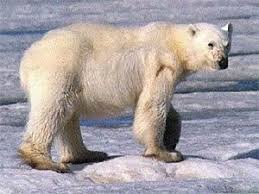
Important points about Polar Climate:
- What is? The polar climate is a manifestation that is generated by perennial cold that covers the 365 days of the year, although at certain times it seems to increase the temperature a little.
- Where it is located? The polar climate manifests itself very close to the poles, where the sun’s rays have little intensity, reducing the ambient heat.
- What flora predominates? In general, they are small plants, both in size and in the shape of the leaves, with some bushes standing out, but above all lichens and mosses.
- What fauna predominates? The most outstanding representation is the polar bear. Other animals that are possible to see are whales, reindeer, arctic fox, arctic hare, seals, arctic wolf and penguins.
- How long is the day and night? In this climate we have days when it is night for up to 24 hours straight, and even at the pole it can cover up to 6 continuous months.
- Can human beings live in this climate? Human life in polar climate is very rare because temperatures make adaptation difficult.
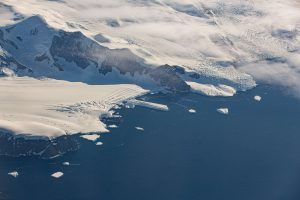 Bone – chilling cold is the shortest and most accurate description we can give you of polar weather.
Bone – chilling cold is the shortest and most accurate description we can give you of polar weather.
It is an almost inhospitable climate, where winter occupies ¾ of the year and summer is almost an illusion. The manifestation of the cold not only comes with temperatures below zero, but is supported by strong and perennial frosts.
We have much more to say about this climate and by reading this post you are able to move to the intense cold that the polar climate offers you, do you sign up?
What is polar climate?
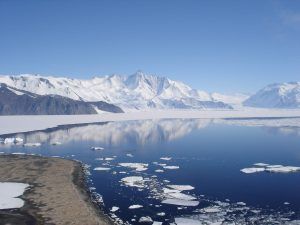 The polar climate is a manifestation that is generated by perennial cold that covers the 365 days of the year, although at certain times it seems to increase the temperature a little.
The polar climate is a manifestation that is generated by perennial cold that covers the 365 days of the year, although at certain times it seems to increase the temperature a little.
During those days we talk about “summer”. A thermal illusion that on many occasions does not exceed 0º C.
The polar climate is characteristic and most of us have seen it at some time through a television program or a movie. The reason is that, even in these conditions, it has an interesting biodiversity to discover, especially in terms of fauna.
Where is the polar climate located geographically?
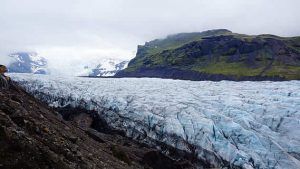 The polar climate manifests itself very close to the poles, where the sun’s rays have little intensity, reducing the ambient heat.
The polar climate manifests itself very close to the poles, where the sun’s rays have little intensity, reducing the ambient heat.
Outside the poles, it can occur at some points of high altitude, such as the highest peaks of the Himalayas and the Andes.
However, this apparent limitation of territory is not really the case, since it is estimated that the polar climate alone occupies up to 20% of the world’s territory.
What characteristics does the polar climate have?
What characterizes the polar climate is summarized below:
- Temperatures: they are cold all year round, being below 0º C and sometimes reaching points as low as -50º C. However, the average is associated with about -30º C. It does not usually exceed 10° C.
- Winter: it manifests itself most of the year, with a duration of approximately 9 months. It is crude, with strong frosts.
- Summer: it’s utopian because it’s not really hot. What happens is that due to the movement of the planet, the environmental effects are modified and the temperature tends to rise a little, but on a few occasions these exceed 0º C.
- Precipitation: it occurs during almost the whole year but in the form of snow, since the temperatures prevent liquid rain. In any case, they are of low intensity, so they do not exceed 200 mm per year.
- Winds: they are manifestations that occur frequently during summer days. In winter, these remain calm. Depending on conditions, snow storms may occur.
- Humidity: it does not exist within this climate that is dry in its entirety.
What flora predominates in the polar climate?
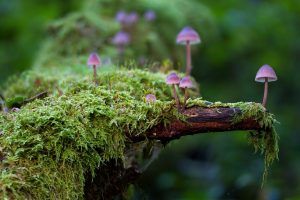 It is very characteristic of this area since it must withstand adverse growth conditions and that manifests itself, above all, on days with more light.
It is very characteristic of this area since it must withstand adverse growth conditions and that manifests itself, above all, on days with more light.
In general they are small plants, both in size and in the shape of the leaves, with some bushes standing out, but above all lichens and mosses.
Of course, all this growth will be affected sooner or later with the arrival of frost.
What fauna predominates in the polar climate?
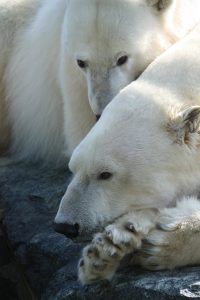 The variety of fauna in the polar climate is limited by the adverse conditions it presents for life in general.
The variety of fauna in the polar climate is limited by the adverse conditions it presents for life in general.
However, due to a system of adaptability, some species have been established that take advantage of the resources they have available to feed themselves.
The most outstanding representation is the polar bear, which feeds on fish that it catches itself in the almost frozen waters.
Other animals that are possible to see are whales, reindeer, arctic fox, arctic hare, seals, arctic wolf and penguins.These animals are able to live in these conditions because they have fat-laden skin that allows them to stay warm inside.
In addition, they have developed strong legs with which to move on the snow and fur, to cover themselves. When extreme cold conditions arrive, the species that have a chance migrate to warmer areas to return when everything improves.
How long is the day and night in the polar climate?
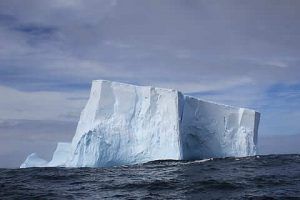 One of the most interesting manifestations in terms of the length of day and night is the polar climate.
One of the most interesting manifestations in terms of the length of day and night is the polar climate.
In this one, we have days in which it is at night up to 24 hours in a row, and even in the pole it can cover up to 6 continuous months.
In general, the sun’s rays do not penetrate directly as is often the case in some seasons in the rest of the world, which prevents a rise in temperatures. A similar case occurs with days, with the Polar Circle having a 24-hour day with light that makes it possible to see through the horizon.
These conditions do not apply in areas where polar climate is generated but are not near the poles, such as in the Andes mountain range.
Can humans live in the polar climate?
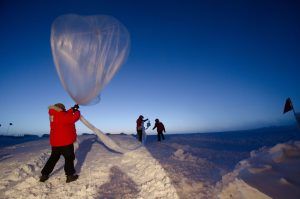 Human life in polar climate is very rare because temperatures make adaptation difficult.
Human life in polar climate is very rare because temperatures make adaptation difficult.
There are certain establishments that meet scientific and research purposes.
But the normal thing is that the people who work in that do not spend long periods of time there. A similar case occurs with the peaks of the mountains, to which climbers have managed to climb, but they do not stay to live.
In the areas near the North Pole it is possible to find some communities today. However, at the south pole the conditions are stronger and these scenarios do not occur.
The polar climate is intense, cold, complex and necessary. Its existence responds to the shape of the earth and the way in which the sun’s rays affect it. Due to its location, the north pole tends to be a bit milder than the south pole, so there is more variety around the flora and fauna.
Bibliographic references
- Climate of Antarctica, CE Constantine – Serve.(Jul-Dec 1943). a. 7 (68-69), 1945 – sidalc.net
- Geographical notes on the polar oceanic climate of the Southern Hemisphere South Orkney Islands, JJ CAPEL MOLINA – Bulletin of the Royal Geographical Society …, 1980 – pascal-francis.inist.fr
- NAVIGATION DIFFICULTIES IN THE POLAR CLIMATE, A De La Maza, G Bustos – 2006 – polardigital.igme.es
- General information on the climate of Antarctica according to the Koppen classification, G Etcheverry Alday – 2016 – antarticarepositorio.umag.cl
- Our cold redeemer: the Antarctic climate, H Pacheco Valles – 2015 – antarticarepositorio.umag.cl
- Analysis of corrosion products of steel, zinc, copper and aluminum formed in the Antarctic polar climate, B Chico, D Fuente, M Morcillo, E Almeida, G Joseph… – 2002 – digital.csic.es
- POLAR BEARS AND THE THREATENED CLIMATE, INTERNATIONAL DAY OF THE POLAR BEAR, CLIMATE C, DAY OF THE DEAD… – 2012mayasfindelmundoprophecies…
Maybe you are also interested in:
- Koppen climate classification: [Concept, Characteristics and Types of Climates]
- Alpine Climate: [Characteristics, Flora, Fauna and Adaptability]
- Arid Climate: [Characteristics, Flora, Fauna and Adaptability]
- Temperate Continental Climate: [Characteristics, Flora, Fauna and Adaptability]
- Continental Climate: [Characteristics, Flora, Fauna and Adaptability]
- High Mountain Climate: [Characteristics, Flora, Fauna and Adaptability]
- Climate of Argentina: [Characteristics, Flora, Fauna and Adaptability]
- Australia Climate: [Characteristics, Flora, Fauna and Adaptability]
- California Climate: [Characteristics, Flora, Fauna and Adaptability]
- Climate of Europe: [Characteristics, Flora, Fauna and Adaptability]
- Tundra Climate: [Characteristics, Flora, Fauna and Adaptability]
- Equatorial Climate: [Characteristics, Flora, Fauna and Adaptability]
- Cold Climate: [Characteristics, Flora, Fauna and Adaptability]
- Cold Weather: [Characteristics, Flora, Fauna and Adaptability]
- Mediterranean Climate: [Characteristics, Flora, Fauna and Adaptability]
- Ocean Climate: [Characteristics, Flora, Fauna and Adaptability]
- Subpolar Climate: [Characteristics, Flora, Fauna and Adaptability]
- Subtropical Climate: [Characteristics, Flora, Fauna and Adaptability]
- Subhumid Temperate Climate: [Characteristics, Flora, Fauna and Adaptability]
- Temperate Climate: [Characteristics, Flora, Fauna and Adaptability]
- Humid Tropical Climate: [Characteristics, Flora, Fauna and Adaptability]
- Dry Tropical Climate: [Characteristics, Flora, Fauna and Adaptability]

![Photo of What Diseases and Pests Attack Bamboo?: [Identify and Treat Them]](https://www.complete-gardening.com/wp-content/uploads/2022/08/what-diseases-and-pests-attack-bamboo-identify-and-treat-them-390x220.jpg)
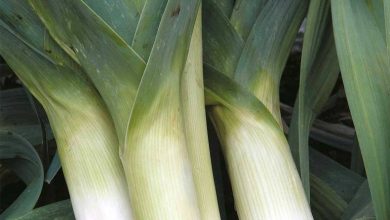
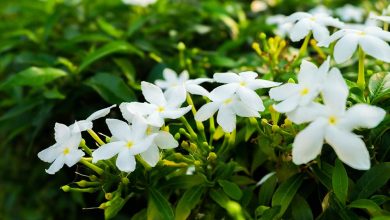
![Photo of Basil Cuttings: [Concept, Season, Rooting and Planting]](https://www.complete-gardening.com/wp-content/uploads/2022/08/basil-cuttings-concept-season-rooting-and-planting-390x220.jpg)